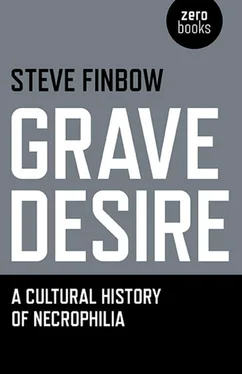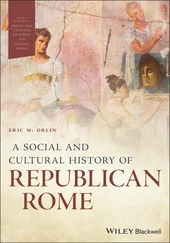A sexual fantasy or erotic fantasy (fictionalized habit) as a means of heightening sexual feelings; an eroticized mental image or scenario used for a number of reasons—to pass the time, to achieve erection in men or vaginal-clitoral arousal in women, or to achieve orgasm. It may be a refiguration in the mind of past events—memerotic—or as wish-fulfilment projection. The fantasy itself need not be reified, in fact, most fantasies move towards a taboo subject/action—paedophilia, rape, group sex, bondage. They can be prosaic fantasies: sex with the milkman (now pool boy), sex slave of Mr Darcy, aliens, or octopuses—as in Katsushika Hokusai’s famous shunga The Dream of the Fisherman’s Wife (circa 1820). Fantasies are also solitary pursuits, aids to masturbation. Mental role-playing that may lead to future erotic actualities. In Vladimir Nabokov’s Despair a man watches his wife in the bedroom while fantasizing about watching himself having sex with his wife in the bedroom while watching the act—a sort of Quaker Oats box of fantasy and voyeurism. One might fantasize about one’s work colleagues, people who share our morning or afternoon commute, schoolteachers, schoolgirls, nurses, doctors, plumbers; one may fantasize about having a 12-inch cock, a threesome with members of the Wu-Tang Clan, of being tied up and abused, there is no limit to the sexual imagination—but it is a mental image or a mental narrative not an actual act, it is an act of an act. For the actual, we need to move on from habit to obsession to fantasy to fetishism. ‘As Hegel was already aware, there is something violent in the very symbolization of a thing, which equals its mortification. This violence operates at multiple levels. Language simplifies a designated thing, reducing it to a single feature. It dismembers the thing, destroying its organic unity, treating its parts and properties as autonomous. It inserts the thing into a field of meaning which is ultimately external to it.’ [37] Violence, p. 61.
‘They were just men—and women, very occasionally—who did unacceptable things, as a factor of neurotic obsession. It was not a binary of good or evil, but a spectrum also inhabited by people who had to check their locks ten times at night, or who could not rest until the kitchen was tidy after each meal.’ [38] Michael Marshall, Straw Men, (New York, 2002), p. 106.
A fetish is an object-representation of a god, spirit, or supernatural being—a metonym for the thing worshipped. Present in all religions—the crucifix being a fetish object representing Christ and the Christian church—a fetish is an object believed to have supernatural properties. Likewise, a sexual fetish is an object representing the body as a whole that has replaced the body-as-a-whole. Alfred Binet in an article ‘Le fetishisme dans l’amour’ (Fetishism in love) in Revue Philosophie, 24, pp. 143–167 (1887) first used ‘fetish’ in its sexual connotation. Unlike habit, sexual fantasy, and sexual obsession, fetishism is classified as a mental disorder and a disease. Binet characterized two forms of fetishism ‘spiritual love’: an extreme form of obsession and fantasy involving social roles, occupations, etc.—see nurse outfits, maids, secretaries, etc.—and ‘plastic love’: a devotion to an object, phenomena or body part. The fetishism of body parts is technically termed ‘partialism’ foot fetish, etc., in this the body part replaces the genitals which in turn replace the body-as-a-whole. A fetish sexually arouses the individual and, in certain cases, may be the individual’s primary means of orgasm. ‘In this case, taken from Koester’s scenario of Talbot’s death, the injuries seem to have been sustained in an optimized auto-fatality, conceived by the driver as some kind of bizarre crucifixion. He would be mounted in the crash in an obscene position as if taking part in some grotesque act of intercourse—Christ crucified on the sodomized body of his own mother.’ [39] The Atrocity Exhibition, p. 31.
Sigmund Freud’s analysis of fetishism centres on deprivation and castration:
‘When now I announce that the fetish is a substitute for the penis, I shall certainly create disappointment; so I hasten to add that it is not a substitute for any chance penis, but for a particular and quite special penis that had been extremely important in early child-hood but had later been lost. That is to say, it should normally have been given up, but the fetish is precisely designed to preserve it from extinction. To put it more plainly: the fetish is a substitute for the woman’s (the mother’s) penis that the little boy once believed in and—for reasons familiar to us—does not want to give up.’ [40] Sigmund Freud, ‘Fetishism’, The Complete Psychological Works of Sigmund Freud, Vol. 21, trans. James Strachey (London, 2001), pp. 152-158.
Whether by association, deprivation and fear of the primary object’s castration, or by conditioning and fixation, sexual fetishists come in three categories:
Objective fetishists—an object (a shoe, stockings, panties) replaces both physically and symbolically the desired other. Somatic fetishists—body parts (partialism) in which a foot, hand, finger, mouth becomes a metonym for the desired body (other). Its extreme form may be seen in the tradition of foot-binding in China or in the ankle-fetishism of Victorian Britain. Abstract fetishists, or pathological narcissism whereby the subject fetishizes an other’s physical imperfections—amputations, obesity, unconsciousness—to emphasize the subject’s perfection. Fetishism may begin in early childhood, a moment when phenomena replace and represent the primary object (mother caregiver) or as signifiers of the primary object—shoes, stockings. Most fetish objects are mirror similes of genitalia and body parts used in sex—shoes, boots, and gloves replace vaginas, penises, hands; while bondage masks and outfits emphasize genitalia or cover (absence as super-presence) desired areas. The materials of fetishism—leather, rubber, latex, fur, silk—mimic the desired skin, the skin (the primary object) forever absent. In transvestic fetishism (a form of objective-somatic fetishism), the clothes represent the absent primary object.
‘The point of subjectification is the origin of the passional line of the postsignifying regime. The point of subjectification can be anything. It must only display the following characteristic traits of the subjective semiotic: the double turning away, betrayal, and existence under reprieve. For anorexics, food plays this role (anorexics do not confront death but save themselves by betraying food, which is equally a traitor since it is suspected of containing larvae, worms, and microbes). A dress, an article of underwear, a shoe are points of subjectification for a fetishist. So is a faciality trait for someone in love, but the meaning of faciality has changed; it is no longer the body of the signifier but has become the point of departure for a deterritorialization that puts everything else to flight. A thing, an animal, will do the trick. There are cogitos on everything. “A pair of eyes set far apart, a head hewn of quartz, a haunch that seemed to live its own life… Whenever the beauty of the female becomes irresistible, it is traceable to a single quality.”’ [41] A Thousand Plateaus: Capitalism and Schizophrenia, p. 129.
Richard von Krafft-Ebing (1840-1902) theorized that fetishism is pathological in nature, in that a sexual fetish (which should disappear like other childhood obsessions and fantasies) remains throughout a lifetime. ‘…the automobile, and in particular the automobile crash, provides a focus for the conceptualizing of a wide range of impulses involving the elements of psychopathology, sexuality, and self-sacrifice.’ [42] The Atrocity Exhibition, p. 156.
Alfred Binet (1857-1911) argued that association is the primary reason for a fetish to occur, that sexual arousal happens accidentally in association with an object and that object—like Proust’s mnemonic Madeleine—becomes intimately connected with sexual excitement and orgasm—what he terms ‘l’amour plastique’. Havelock Ellis (1859-1939) asserted that we are sexual beings at a very early age and that children’s primary sexual arousal defines their sexuality. ‘We wish to make a simple point about psycho-analysis: from the beginning, it has often encountered the question of the becomings-animal of the human being: in children, who continually undergo becomings of this kind; in fetishism and in particular masochism, which continually confront this problem. The least that can be said is that the psychoanalysts, even Jung, did not understand, or did not want to understand. They killed becoming-animal, in the adult as in the child.’ [43] A Thousand Plateaus: Capitalism and Schizophrenia, p. 259.
Magnus Hirschfeld (1868-1935) believed all of us to be fetishists but that an over-emphasis on a certain object creates a pathological fetishism. Thumb-sucking, cuddly toys and pacifiers are all transitional objects. Donald Winnicott (1896-1971) stated, ‘Fetish can be described in terms of a persistence of a specific object or type of object dating from infantile experience in the transitional field, linked with the delusion of a maternal phallus,’ and ‘a specific object or type of object, dating from an experience during the period where the mother gradually pulls back as an immediate provider of satisfaction of the child’s desires, persists as a characteristic in adult sexual life.’ [44] Donald Winnicott, ‘Transitional Objects and Transitional Phenomena—a Study of the First Not-me Possession,’ International Journal of Psycho-Analysis, 34, 89-97 (1953).
The International Statistical Classification of Diseases and Related Health Problems, published by the World Health Organization in 2005, classifies fetishism as ‘the use of inanimate objects as a stimulus to achieve sexual arousal and satisfaction; in most cases said object is required for sexual gratification.’ The American Psychiatric Association’s Diagnostic and Statistical Manual of Mental Disorders (2000) categorizes fetishism as ‘the use of nonliving objects as a stimulus to achieve sexual arousal or satisfaction. (This only applies if the objects are not specifically designed for sexual stimulation (e.g., a vibrator)).’
Читать дальше












